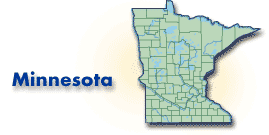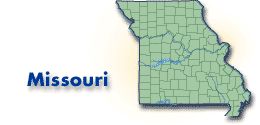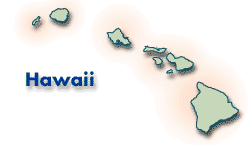|
|
| Under Secretary Michael Brown | Agency Background | PSAs | News Releases | Photo Library | Radio Network | FEMA News Source |
| Region I | Region II | Region III | Region IV | Region V | Region VI | Region VII | Region VIII | Region IX | Region X |
| Home » Hazards » Tornadoes » Safe Rooms | ||||||||||||||||||||||||||||||||||||||||||||||||||||||||||||||||||||||||||||||||||||||||||||||||||||||||||||||||||||||
|
Private Safe Room Initiatives
Community Block Grant Funds Now Available to Build Tornado Shelters in Manufactured Home Parks
On December 3, 2003, the President signed into law the Tornado Shelters Act, which amends the Housing and Community Development Act of 1974, authorizing communities to use community development block grant funds to construct tornado-safe shelters in manufactured home parks. To be eligible, a shelter must be located in a neighborhood or park that contains at least 20 units, consists predominately of low- and moderate-income households, and is in a state where a tornado has occurred within the current or last 3 years. The shelter must comply with tornado-appropriate safety and construction standards, be large enough to accommodate all members of the park/neighborhood, and be located in a park/neighborhood that has a warning siren.The full text of this legislation, Public Law 108-146, is available on-line at thomas.loc.gov. Search the databse for tornado shelter information.
[ Back to Top ]

ALABAMA
The Alabama Safe Room Initiative
On the basis of 40 years of tornado history and over 100 years of hurricane history, the United States has been divided into four zones that reflect the number and strength of extreme windstorms. Alabama is in Zones 3 and 4, which experience the most frequent and strongest tornado activity.
As a result of a tornado event and subsequent Presidential Declared Disaster of December 16, 2000 in which 12 people were killed, over 300 persons were injured, and several hundred homes were destroyed or damaged, Alabama implemented their "Taking Shelter from the Storm" Safe Room Initiative. Using Hazard Mitigation Grant Program (HMGP) funds made available as a result of the declaration, a total of 568 shelters have been constructed as of December 31, 2003. Of these, 559 are individual shelters with an average reimbursement to the owner of $2,910. An additional nine community shelters have been constructed at an average reimbursement of $20,800. A unique application of the program, not using HMGP funds, was accomplished in Jefferson County Alabama in April 2002. An affordable housing partnership (including: the Greater Birmingham Habitat for Humanity, Community Housing Development Corporation of Alabama, YW Homes, and other non-profit affordable housing developers) built a subdivision to provide replacement housing for low-income families who lost their homes in a tornado in 1998. Each of the 80 houses in the subdivision included a safe room as part of the construction. A community shelter was constructed adjacent to a park area that would service not only this subdivision but also the surrounding community. 
MISSISSIPPI
A Safe Place to Go: The Mississippi Safe Room - Storm Shelter Initiative
Mississippi experiences approximately 20 tornadoes per year that continue to pose a threat to life and property. The statistics of the 25 deadliest tornadoes within the U.S. (1840 to present) include five Mississippi communities. As a result of the tornadoes and severe weather events of February and March 2001, 8 people died and another 106 people were injured. The resultant Presidential Disaster Declaration made Hazard Mitigation Grant Program (HMGP) funds available to the state that were used to implement "A Safe Place to Go," the Mississippi Emergency Management Agency (MEMA) Shelter Initiative. This initiative, administered by the Mississippi's Mitigation Bureau, has enjoyed unqualified success. The state will reimburse up to 75% of the eligible costs not to exceed $3,500 for single-family shelters and $5,000 for group or community shelters. To qualify, the safe room/shelter must be constructed according to design plans of FEMA 320: Taking Shelter From the Storm: Building a Safe Room Inside Your House; FEMA 361: Design and Construction Guidance for Community Shelters; or other FEMA acknowledged performance criteria and the applicants must be in a designated county of the declared disaster.
As of February 2004, a total 1,165 shelters have been constructed in Mississippi. Of these, 1,105 are individual shelters, built at an average total cost of $3,072 with an average reimbursement to the owner of $2,304. Additionally, 60 group/community shelters have been built with an average reimbursement of $4,342. The popularity of the shelter program grows and participation of eligible participants has increased 30% since its inception as residents realize they truly have "a safe place to go for shelter from the storm."

MINNESOTA
Steele County Manufactured Home Park Storm Shelter Project
Steele County, Minnesota began an initiative to promote and encourage manufactured home neighborhoods to provide shelters for their residents. Three new shelters were constructed and one shelter was renovated to meet FEMA 361: Design and Construction Guidance for Community Shelters design criteria, and local Americans with Disabilities Act (ADA) requirements. The shelters were publicized in resident newsletters, local newspapers, and ribbon cutting ceremonies. All residents received keys to the shelter and a map with a route from their home to the shelter.
Clearwater Forest Manufactured Home Park Storm Shelter
Stearns and Benton Counties initiated the construction of a residential community storm shelter at the Clearwater Forest Manufactured Home Park. The shelter was constructed to meet FEMA 361: Design and Construction Guidance for Community Shelters design criteria, and local ADA requirements.
City of Warba Community Storm Shelter Project
The City of Warba, Minnesota, initiated the construction of a residential storm shelter to accommodate residents who do not have adequate storm shelter options. The shelter can accommodate 90 residents. The shelter was constructed to meet the FEMA 361: Design and Construction Guidance for Community Shelters design criteria, and local ADA requirements.

OHIO
Xenia Residential Safe Room Initiative
The City of Xenia, Ohio began an initiative to promote residents to construct safe rooms in their homes. As of February 2004, the City of Xenia has completed 10 residential safe rooms. Residents will be reimbursed 75% of the total cost or $3,488.00, whichever is less. Low to moderate income residents will be reimbursed 90% of the total cost or $4,185.00, whichever is less. This initiative remains active. To qualify, the safe room/shelter must meet criteria set forth by FEMA 320: Taking Shelter From the Storm: Building a Safe Room Inside Your House.

WISCONSIN
Juneau County Storm Shelter Project
Juneau County, Wisconsin received Hazards Mitigation Grant Program (HMGP) funds to purchase and install 31 storm shelters. The underground fiberglass shelters are designed for short-term use during severe weather events. The reinforced spheres are 8 feet in diameter and are buried underground with above-ground ventilation vents. Each unit can comfortably accommodate 10-12 people. Each shelter costs $5,300 and has been used in tornado-prone areas in southern states. The units were installed in rural areas on residential lots that serve multiple properties and are open to anyone who needs shelter during a storm. Shelter priority was given to day care centers, and manufactured and wood frame homes. The shelters will serve a number of nearby households and will protect against tornados and severe windstorms. To qualify, the safe room/shelter must meet the performance criteria set forth by FEMA 320: Taking Shelter From the Storm: Building a Safe Room Inside Your House or other FEMA-defined performance criteria. View Photos

OKLAHOMA
Oklahoma Residential Shelter Initiative
On May 3, 1999, more than 70 tornadoes tore through Kansas and Oklahoma in the worst tornado outbreak in a generation. Approximately 90% of the buildings damaged by the tornadoes were single-family dwellings. With over 6,000 single-family homes damaged, the first large-scale initiative to build thousands of safe rooms through a rebate program was begun. To qualify for the rebate program, the safe room or shelter construction had to be built according to the design plans depicted in FEMA 320: Taking Shelter From the Storm: Building a Safe Room Inside Your House or other FEMA-defined performance criteria. The safe room rebate program resulted in the construction of 6,016 shelters throughout the State of Oklahoma. As a result, thousands of Oklahoma residents previously at risk from tornadoes and high winds now have ready access to places of safety designed to provide protection from the most severe wind hazards. Although funding for the rebate program has ended, the initiative continues to result in the construction of safe rooms throughout the state. View Case Study.
2003 Re-initiation of Oklahoma Residential Shelter Initiative
As mentioned above, the Oklahoma Residential Shelter Initiative resulted in the construction of 6,016 shelters. As proof of their value, when the tornado of May 9, 2003 hit the Oklahoma City metropolitan area, residents took shelter in these safe rooms, and no lives were lost. This positive outcome is directly attributable to the availability and utilization of the safe rooms. With this in mind, the State of Oklahoma in conjunction with FEMA, once again initiated a program to provide a rebate for the purchase and installation of safe rooms by Oklahomans who either had their homes destroyed or damaged by the May 2003 tornadoes and severe storms.
In October 2003, the Governor of Oklahoma authorized Operation Safe Room, where more than $3 million in rebates were made available to residents of Oklahoma for the construction of safe rooms and storm shelters. The program provided a 75% rebate, up to $2,000, to eligible Oklahomans who install above-ground safe rooms or underground storm shelters. Residents were required to register by the end of October 2003, and the safe room/shelter had to be constructed, installed, or under contract to be constructed/installed by the end of December 2004. Related links: GM and UAW Help with the Oklahoma Residential Shelter Initiative

IOWA
Residential Safe Room Initiative
Safe rooms were constructed in three residences in Iowa to provide protection for its occupants during high wind events. All shelters were constructed to meet criteria established in FEMA 320: Taking Shelter From the Storm: Building a Safe Room Inside Your House.
Mentally Disabled Group Residence Safe Room
Mainstream Living, Inc., a Non-Profit Organization, provided a safe room in a home for four mentally disabled residents. The shelter had to be designed for individuals with mobility issues and was designed to meet local Americans with Disabilities Act requirements. To receive FEMA funding, the shelter had to be designed to meet the design criteria of FEMA 320: Taking Shelter From the Storm: Building a Safe Room Inside Your House.

KANSAS
Sedgwick County Manufactured Home Park Shelter Ordinance
Sedgwick County, Kansas, passed a resolution that requires manufactured home communities to provide storm shelters for their residents. The resolution (02-00) was effective for Sedgwick County beginning on July 1, 2000. It requires that every manufactured home neighborhood of 10 or more manufactured home spaces provide above-grade or below-grade storm shelters. The storm shelter must be:
Riley County Safe Room Grant Program
Riley County developed a Safe Room Grant program that provided funds to construct 76 residential safe rooms: 3 in the Butterfield Housing Addition View Photos; 3 for the Manhattan Housing Authority View Photos; 2 for manufactured home neighborhoods in the county; 4 in Habitat for Humanity homes; 9 for the Meadowlark Hills Retirement Community View Photos, and 55 in single-family residential homes. All shelters were constructed to meet criteria set forth by FEMA 320: Taking Shelter From the Storm: Building a Safe Room Inside Your House or FEMA 361: Design and Construction Guidance for Community Shelters.

MISSOURI
City of St. Joseph Manufactured Home Park Shelter Ordinance
The City of St Joseph, Missouri, established an ordinance that requires manufactured home communities to provide storm shelters for their residents. All storm shelters are required to meet local Americans with Disabilities Act requirements and the design criteria set forth by FEMA 361: Design and Construction Guidance for Community Shelters. For details, contact the City of St. Joseph Building Codes Department.
Northland Habitat for Humanity Safe Room Initiative
The Habitat for Humanity Northland coordinated the construction of safe rooms in 10 of their homes. All safe rooms were constructed to meet criteria set forth by FEMA 320: Taking Shelter From the Storm: Building a Safe Room Inside Your House. For details on the Habitat for Humanity safe room projects, contact your local Habitat for Humanity chapter.

SOUTH DAKOTA
Watertown City Shelter Initiative
The City of Watertown, South Dakota, utilized FEMA mitigation funds to construct shelters throughout the community to provide protection for its first responders and citizens. Shelters were constructed at a fire station, in homes, in city parks and campgrounds, and at the county extension building. All shelters were constructed to meet criteria set forth by FEMA 320: Taking Shelter From the Storm: Building a Safe Room Inside Your House or FEMA 361: Design and Construction Guidance for Community Shelters. The City is also constructing a shelter to contain the city's emergency transmission equipment to make sure it is operational during severe weather. For details on the different public shelters listed above, see Public Shelter Initiatives.

HAWAII
Residential Safe Room Tax Incentive Initiative - County of Kauai, State of Hawaii
The Safe Room Ordinance Tax Incentive was established in September 2000, by the Council of the County of Kauai, State of Hawaii, as Ordinance number 752; Bill number. 1958. The purpose of the ordinance is to provide property tax exemption to residential homeowners who construct safe rooms in their homes. The ordinance defines a safe room as: "a windowless, accessible room designed for wind loads of 250 miles per hour," located out of an area susceptible to flooding, and that provides safety from roof or housing collapse, flying debris, and storm surge or flooding. Safe rooms must be designed and constructed in compliance with the standards in FEMA 320: Taking Shelter From the Storm: Building a Safe Room Inside Your House, August 1999 edition, or FEMA 361: Design and Construction Guidance for Community Shelters, July 1999. The specific language of the ordinance is: residential buildings or accessory buildings to a residence certified as containing one or more safe rooms shall receive an exemption of $40,000 per residence. Since the onset of the County Council's legislation in 2001, 12 permits have been issued, mostly for new construction.
In 2001 and 2002, the Contractors Association of Kauai provided education on construction at their annual Building and Remodeling Show. Kauai County received a safe room from FEMA, which was built on Kauai as a portable model that can be displayed at events and locations, including the County Office Building. There are plans for continued public education and awareness on the Safe Room Ordinance. Information will be provided to people seeking building permits.
|
||||||||||||||||||||||||||||||||||||||||||||||||||||||||||||||||||||||||||||||||||||||||||||||||||||||||||||||||||||||
| Last Updated: Friday, 22-Oct-2004 13:16:20 EDT |
| Español | Privacy Policy | Accessibility | Site Help | Site Index | Contact Us | FEMA Home |
| FEMA 500 C Street, SW Washington, D.C. 20472 Phone: (202) 566-1600 |